Related Research Articles
George Whale was an English locomotive engineer who was born in Bocking, Essex, and educated in Lewisham, London. He worked for the London and North Western Railway (LNWR).

The GWR 4100 Class was a class of steam locomotives in the Great Western Railway (GWR) of the United Kingdom.
The Great Western Railway 3800 Class, also known as the County Class, were a class of 4-4-0 steam locomotives for express passenger train work introduced in 1904 in a batch of ten. Two more batches followed in 1906 and 1912 with minor differences. They were designed by George Jackson Churchward, who used standard components to produce a four-coupled version of his Saint Class 4-6-0s.
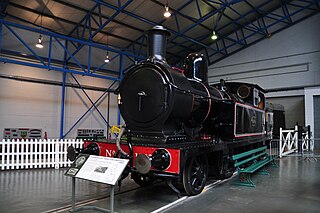
The Lancashire and Yorkshire Railway Class 5 were 2-4-2T steam locomotives designed by Chief Mechanical Engineer (CME) John Aspinall and introduced from 1889 for local passenger work. Later batches included progressive modifications such as extended coal bunkers and Belpaire fireboxes. The final batch built from 1911 to 1914 under George Hughes incorporating superheated boilers gave increased tractive effort, others were also rebuilt to this standard. When Hughes introduced his classification system in 1919, the more powerful superheated locomotives were designated Class 6. The final examples were withdrawn in 1961.
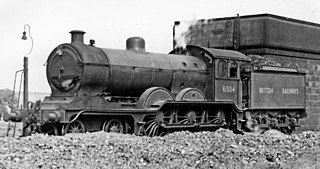
The Great Eastern Railway (GER) Class S69, also known as 1500 Class, and later classified B12 by the London and North Eastern Railway (LNER) is a class of 4-6-0 steam locomotive designed to haul express passenger trains from London Liverpool Street station along the Great Eastern Main Line. Originally they were designed by S. D. Holden, but were much rebuilt, resulting in several subclasses.
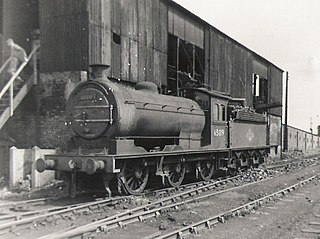
The North Eastern Railway (NER) Class P3, classified J27 by the LNER, is a class of 0-6-0 steam locomotive. The P3 Class was designed by Wilson Worsdell and was a relatively minor modification of the existing North Eastern Railway Class P2. The most significant change was a deeper firebox with shallower sloping fire grate. This was achieved by raising the boiler slightly, and by reducing the clearance between the firebox and the rear axle. The P3 Class were a freight engine by nature and used for hauling long trains of freight.
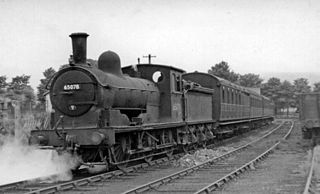
The North Eastern Railway (NER) Class C1, was a class of 0-6-0 freight locomotives designed by T.W. Worsdell. They were used throughout the NER system, although particularly in Teesside between 1886 and 1962.

The North Eastern Railway (NER) Class H, classified as Class Y7 by the London and North Eastern Railway (LNER) is a class of 0-4-0T steam locomotives designed for shunting.

The SECR N class was a type of 2-6-0 ("mogul") steam locomotive designed in 1914 by Richard Maunsell for mixed-traffic duties on the South Eastern and Chatham Railway (SECR). Built between 1917 and 1934, it was the first non-Great Western Railway (GWR) type to use and improve upon the basic design principles established by GWR Chief Mechanical Engineer (CME) George Jackson Churchward. The N class was based on the GWR 4300 Class design, improved with Midland Railway concepts.
The North Eastern Railway (NER) Class K classified as Class Y8 by the London and North Eastern Railway (LNER) is a class of 0-4-0T steam locomotives designed for shunting. It was designed by Thomas W. Worsdell and five of these tiny engines were built in 1890. These were numbered 559-63.

The London and North Western Railway (LNWR) Prince of Wales Class was a class of express passenger locomotive. It was in effect, a superheated version of the Experiment Class 4-6-0.

The NER Class P1 was a class of 0-6-0 steam locomotives of the North Eastern Railway. Class P1 was a development of Class P, having a boiler four inches longer, and a firebox six inches longer. To accommodate these, the wheelbase was increased by nine inches. The cylinder stroke was also increased by two inches. None survived into preservation.
The NER 38 Class was a class of 4-4-0 steam locomotives designed by Alexander McDonnell for the North Eastern Railway. Twenty-eight were built in 1884–5, and remained in service until 1915–23.
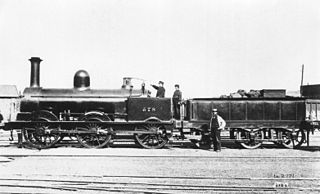
The London and North Western Railway (LNWR) DX Goods class was a class of 0-6-0 steam locomotive, designed by John Ramsbottom for freight duties. 943 were constructed, making them the largest single class of steam locomotives built in the United Kingdom. Despite this, none were preserved.

The NBR A Class (London and North Eastern Railway Classes N14 and N15 were the standard 0-6-2 tank locomotives designed by William P. Reid for freight duties on the North British Railway. The LNER regarded the original locomotives as two separate classes. The final batch of locomotives was on order at the time of the grouping in 1923.

The NER B and B1 Classes were two classes of 0-6-2 tank locomotives designed by Thomas William Worsdell for heavy freight and mineral on the North Eastern Railway, introduced in 1886. They were tank engine versions of the NER C1 Class 0-6-0, using both simple expansion and also the von Borries configuration for two-cylinder compound locomotives. Both types were later rebuilt using superheated steam and the compounds were also rebuilt as simple expansion locomotives, and eventually formed a single class. Many of the superheated locomotives were also later returned to saturated steam as their original boilers wore out. As a result the classes have had a very complex mechanical history.
The North Eastern Railway was formed by merger in 1854 and merged into the London and North Eastern Railway at the grouping in 1923. Between those dates five men held the post of Locomotive Superintendent.

The NER Class V was a class of twenty steam locomotives of the 4-4-2 wheel arrangement. They were designed by Wilson Worsdell for the North Eastern Railway (NER) as express passenger locomotives.
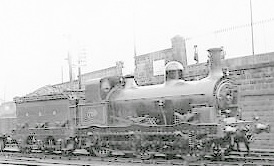
The NER 708 Class was a class of 0-6-0 freight steam locomotive of the North Eastern Railway, designed by Edward Fletcher in 1870. A total of seventy-of the class were built for the NER.
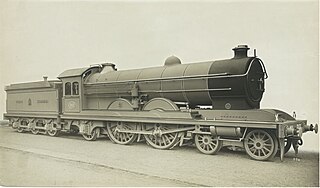
The NER Class Z was an Atlantic class of locomotives designed by Vincent Raven. It was introduced in 1911.
References
- ↑ Baxter 1986, pp. 108–18.
- ↑ Nock 1974, pp. 44–5.
- ↑ Baxter 1986, pp. 108–17.
- ↑ Casserley & Johnson 1966, pp. 51.